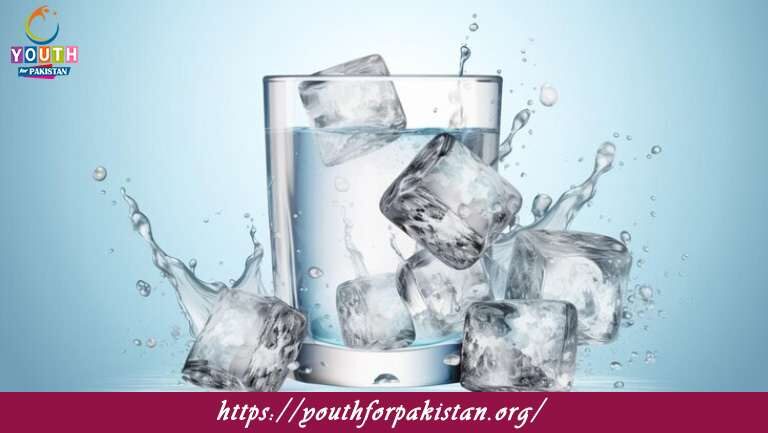11th Class Chemistry Chapter 4 MCQs with Answers

Solidify your concepts with Liquids & Solids MCQs focused on states of matter, phase changes, and intermolecular forces. These Chapter 4 quizzes simplify 11th Class Chemistry topics.
The state of matter that has a definite volume but no definite shape is:
a) Solid
b) Liquid
c) Gas
d) Plasma
Which of the following forces is responsible for holding the particles together in a liquid?
a) Gravitational force
b) Electrostatic force
c) Intermolecular force
d) Nuclear force
The phenomenon due to which a liquid turns into vapor at any temperature below its boiling point is called:
a) Vaporization
b) Boiling
c) Evaporation
d) Condensation
The process of conversion of a liquid into its vapor phase at its boiling point is called:
a) Vaporization
b) Boiling
c) Evaporation
d) Condensation
The intermolecular forces in liquids are:
a) Very weak
b) Stronger than gases but weaker than solids
c) Stronger than solids
d) Absent
Which of the following has the highest intermolecular forces?
a) Gas
b) Liquid
c) Solid
d) Plasma
The state of matter that has a definite shape and volume is:
a) Solid
b) Liquid
c) Gas
d) Plasma
The process of conversion of a solid directly into its vapor phase without passing through the liquid phase is called:
a) Vaporization
b) Boiling
c) Evaporation
d) Sublimation
The state of matter that has neither definite shape nor definite volume is:
a) Solid
b) Liquid
c) Gas
d) Plasma
The temperature at which the solid state of a substance changes into its liquid state at atmospheric pressure is called:
a) Melting point
b) Boiling point
c) Freezing point
d) Sublimation point
The temperature at which a liquid changes into its solid state at atmospheric pressure is called:
a) Melting point
b) Boiling point
c) Freezing point
d) Sublimation point
The process of conversion of a liquid into its solid state is called:
a) Melting
b) Boiling
c) Freezing
d) Condensation
The phenomenon of is responsible for the curved meniscus in a liquid.
a) Adhesion
b) Cohesion
c) Capillarity
d) Surface tension
The phenomenon of is responsible for the spherical shape of liquid droplets.
a) Adhesion
b) Cohesion
c) Capillarity
d) Surface tension
The temperature at which the gaseous state of a substance changes into its liquid state at atmospheric pressure is called:
a) Melting point
b) Boiling point
c) Condensation point
d) Sublimation point
The process of conversion of a liquid into its gaseous state at its boiling point is called:
a) Vaporization
b) Boiling
c) Evaporation
d) Condensation
The state of matter that has a definite shape and volume is:
a) Solid
b) Liquid
c) Gas
d) Plasma
The process of conversion of a solid directly into its vapor phase without passing through the liquid phase is called:
a) Vaporization
b) Boiling
c) Evaporation
d) Sublimation
The state of matter that has neither definite shape nor definite volume is:
a) Solid
b) Liquid
c) Gas
d) Plasma
The temperature at which the solid state of a substance changes into its liquid state at atmospheric pressure is called:
a) Melting point
b) Boiling point
c) Freezing point
d) Sublimation point
The temperature at which a liquid changes into its solid state at atmospheric pressure is called:
a) Melting point
b) Boiling point
c) Freezing point
d) Sublimation point
The process of conversion of a liquid into its solid state is called:
a) Melting
b) Boiling
c) Freezing
d) Condensation
The temperature at which the gaseous state of a substance changes into its liquid state at atmospheric pressure is called:
a) Melting point
b) Boiling point
c) Condensation point
d) Sublimation point
The process of conversion of a liquid into its gaseous state at its boiling point is called:
a) Vaporization
b) Boiling
c) Evaporation
d) Condensation
The state of matter that has a definite shape and volume is:
a) Solid
b) Liquid
c) Gas
d) Plasma
The process of conversion of a solid directly into its vapor phase without passing through the liquid phase is called:
a) Vaporization
b) Boiling
c) Evaporation
d) Sublimation
The state of matter that has neither definite shape nor definite volume is:
a) Solid
b) Liquid
c) Gas
d) Plasma
The temperature at which the solid state of a substance changes into its liquid state at atmospheric pressure is called:
a) Melting point
b) Boiling point
c) Freezing point
d) Sublimation point
The temperature at which a liquid changes into its solid state at atmospheric pressure is called:
a) Melting point
b) Boiling point
c) Freezing point
d) Sublimation point
The process of conversion of a liquid into its solid state is called:
a) Melting
b) Boiling
c) Freezing
d) Condensation
The phenomenon of is responsible for the curved meniscus in a liquid.
a) Adhesion
b) Cohesion
c) Capillarity
d) Surface tension
The phenomenon of is responsible for the spherical shape of liquid droplets.
a) Adhesion
b) Cohesion
c) Capillarity
d) Surface tension
The temperature at which the gaseous state of a substance changes into its liquid state at atmospheric pressure is called:
a) Melting point
b) Boiling point
c) Condensation point
d) Sublimation point
The process of conversion of a liquid into its gaseous state at its boiling point is called:
a) Vaporization
b) Boiling
c) Evaporation
d) Condensation
The state of matter that has a definite shape and volume is:
a) Solid
b) Liquid
c) Gas
d) Plasma
The process of conversion of a solid directly into its vapor phase without passing through the liquid phase is called:
a) Vaporization
b) Boiling
c) Evaporation
d) Sublimation
The state of matter that has neither definite shape nor definite volume is:
a) Solid
b) Liquid
c) Gas
d) Plasma
The temperature at which the solid state of a substance changes into its liquid state at atmospheric pressure is called:
a) Melting point
b) Boiling point
c) Freezing point
d) Sublimation point
The temperature at which a liquid changes into its solid state at atmospheric pressure is called:
a) Melting point
b) Boiling point
c) Freezing point
d) Sublimation point
The process of conversion of a liquid into its solid state is called:
a) Melting
b) Boiling
c) Freezing
d) Condensation
The phenomenon of is responsible for the curved meniscus in a liquid.
a) Adhesion
b) Cohesion
c) Capillarity
d) Surface tension
The phenomenon of is responsible for the spherical shape of liquid droplets.
a) Adhesion
b) Cohesion
c) Capillarity
d) Surface tension
The temperature at which the gaseous state of a substance changes into its liquid state at atmospheric pressure is called:
a) Melting point
b) Boiling point
c) Condensation point
d) Sublimation point
The process of conversion of a liquid into its gaseous state at its boiling point is called:
a) Vaporization
b) Boiling
c) Evaporation
d) Condensation
The state of matter that has a definite shape and volume is:
a) Solid
b) Liquid
c) Gas
d) Plasma
The process of conversion of a solid directly into its vapor phase without passing through the liquid phase is called:
a) Vaporization
b) Boiling
c) Evaporation
d) Sublimation
The state of matter that has neither definite shape nor definite volume is:
a) Solid
b) Liquid
c) Gas
d) Plasma
The temperature at which the solid state of a substance changes into its liquid state at atmospheric pressure is called:
a) Melting point
b) Boiling point
c) Freezing point
d) Sublimation point
The temperature at which a liquid changes into its solid state at atmospheric pressure is called:
a) Melting point
b) Boiling point
c) Freezing point
d) Sublimation point
The process of conversion of a liquid into its solid state is called:
a) Melting
b) Boiling
c) Freezing
d) Condensation
The phenomenon of __________________ is responsible for the curved meniscus in a liquid.
a) Adhesion
b) Cohesion
c) Capillarity
d) Surface tension
The phenomenon of__________________is responsible for the spherical shape of liquid droplets.
a) Adhesion
b) Cohesion
c) Capillarity
d) Surface tension
The temperature at which the gaseous state of a substance changes into its liquid state at atmospheric pressure is called:
a) Melting point
b) Boiling point
c) Condensation point
d) Sublimation point
The process of conversion of a liquid into its gaseous state at its boiling point is called:
a) Vaporization
b) Boiling
c) Evaporation
d) Condensation
The state of matter that has a definite shape and volume is:
a) Solid
b) Liquid
c) Gas
d) Plasma
The process of conversion of a solid directly into its vapor phase without passing through the liquid phase is called:
a) Vaporization
b) Boiling
c) Evaporation
d) Sublimation
The state of matter that has neither definite shape nor definite volume is:
a) Solid
b) Liquid
c) Gas
d) Plasma
The temperature at which the solid state of a substance changes into its liquid state at atmospheric pressure is called:
a) Melting point
b) Boiling point
c) Freezing point
d) Sublimation point
If you are interested to enhance your knowledge regarding Physics, Chemistry, Biology, and Computer please click on the link of each category, you will be redirected to dedicated website for each category.





